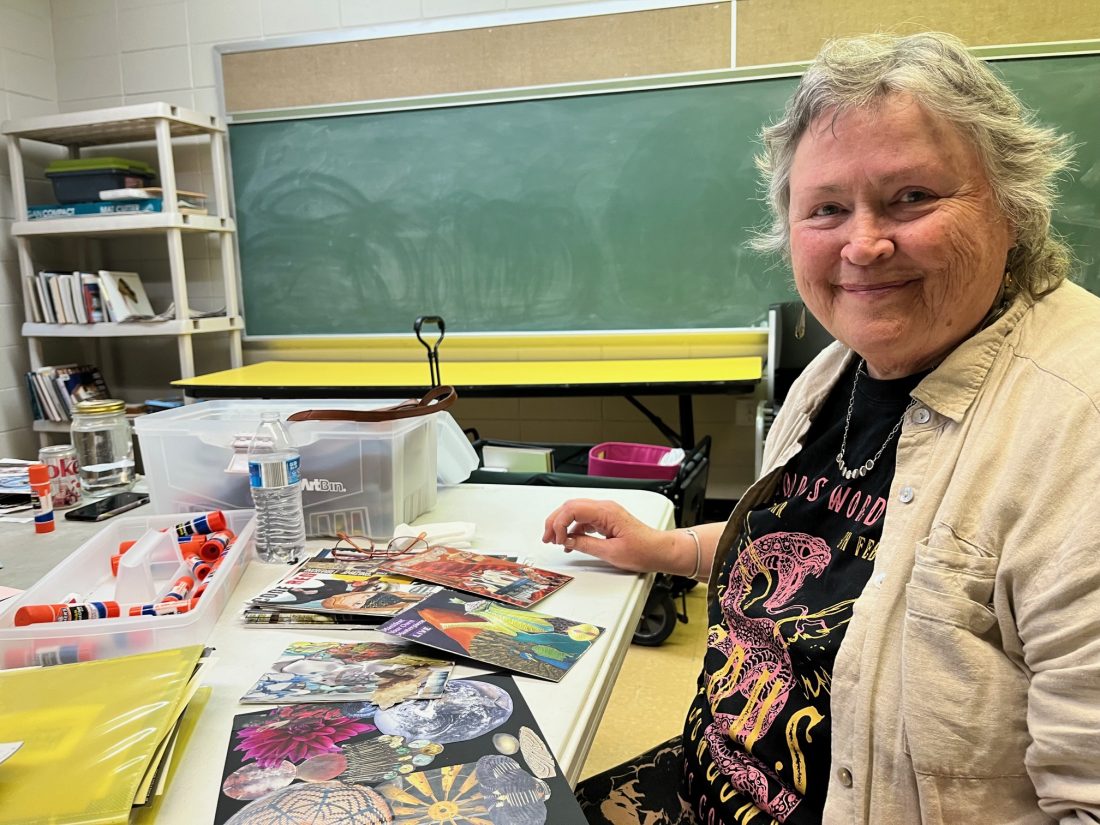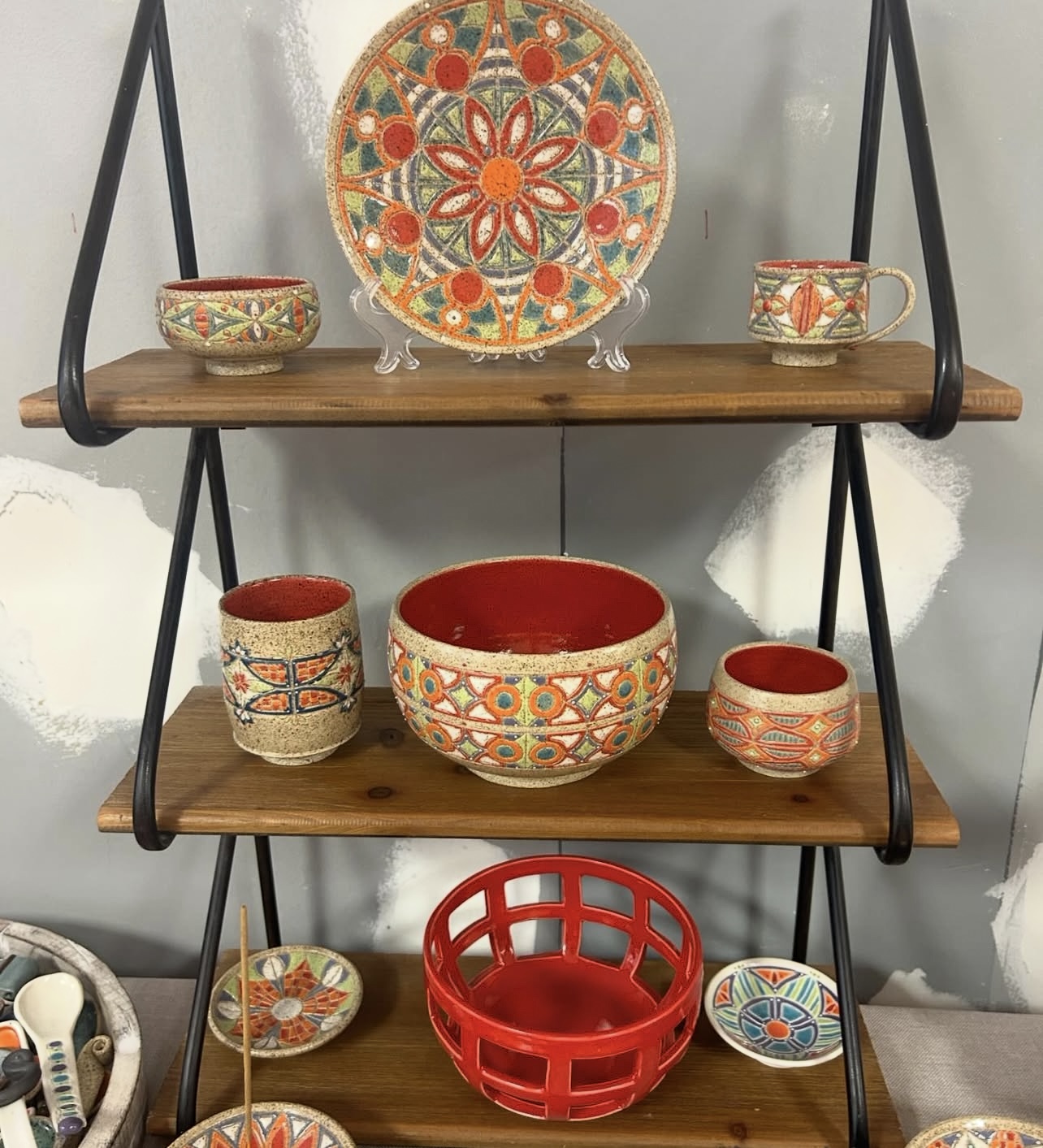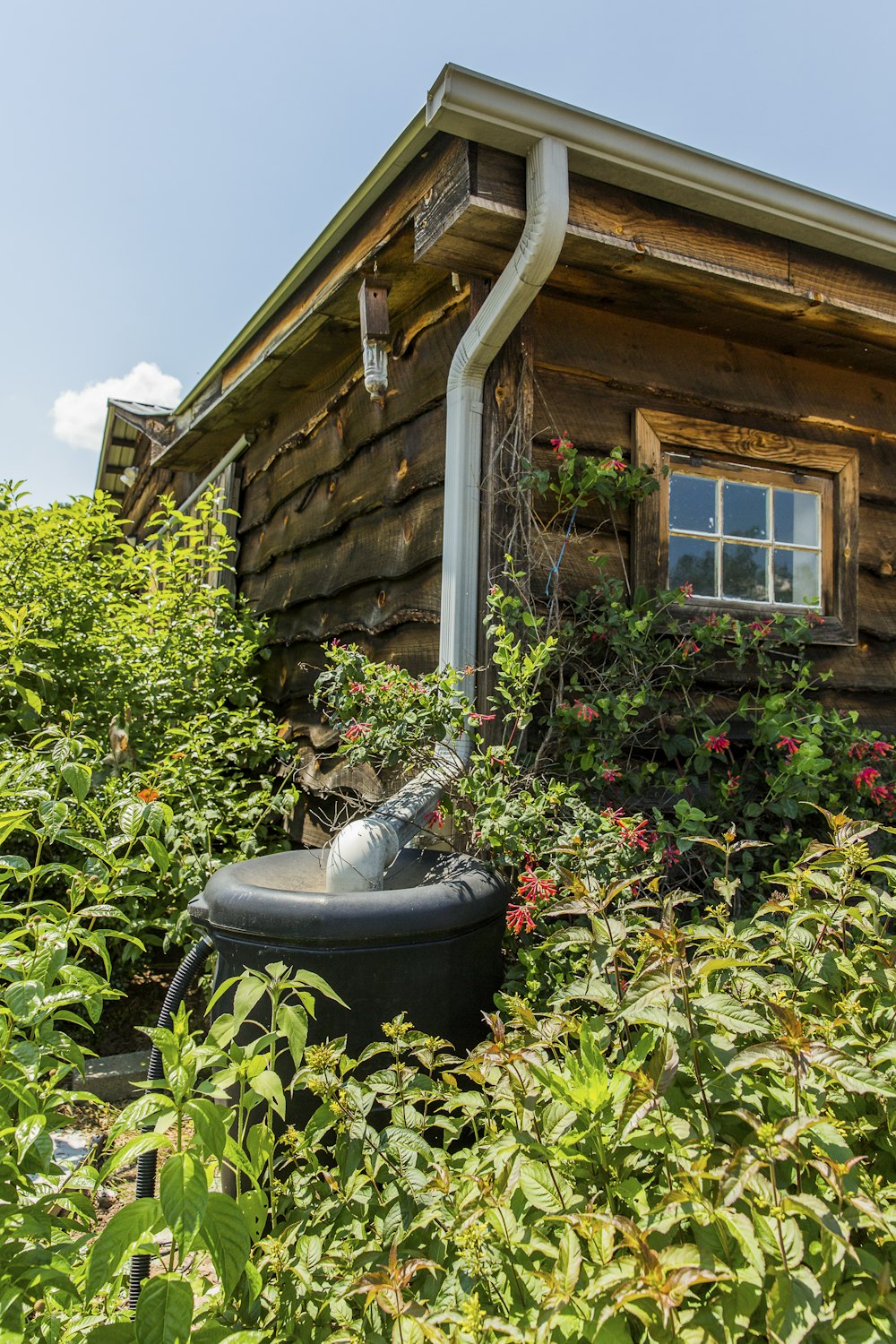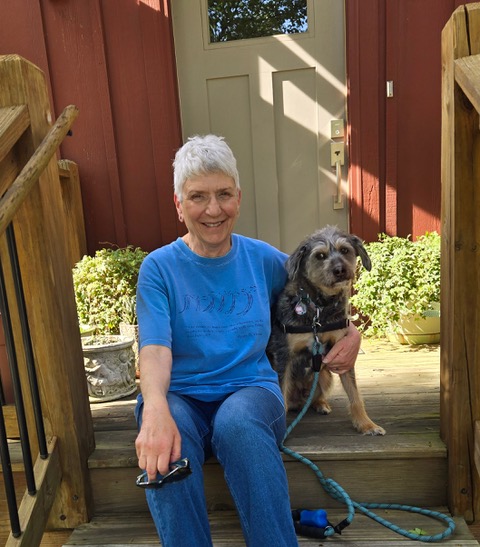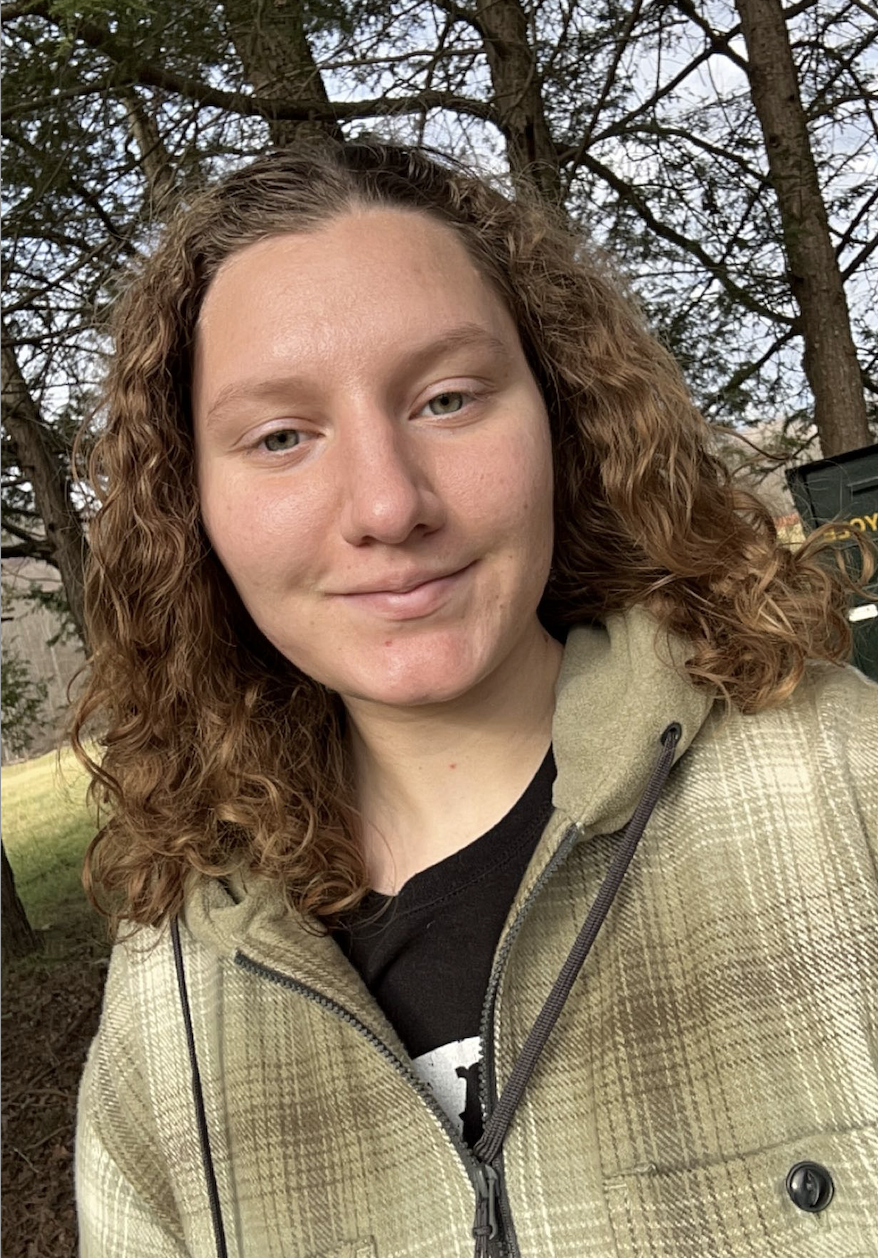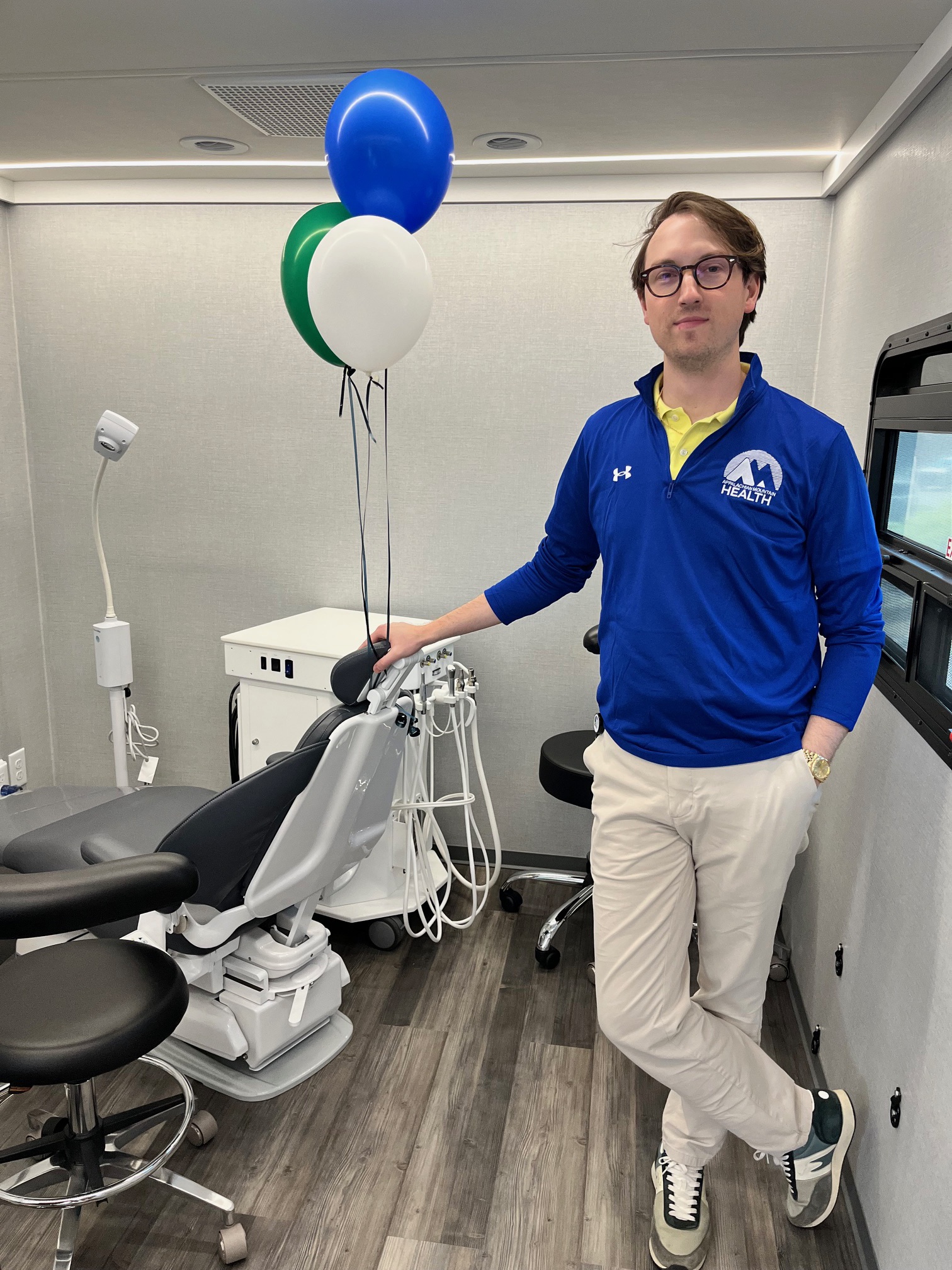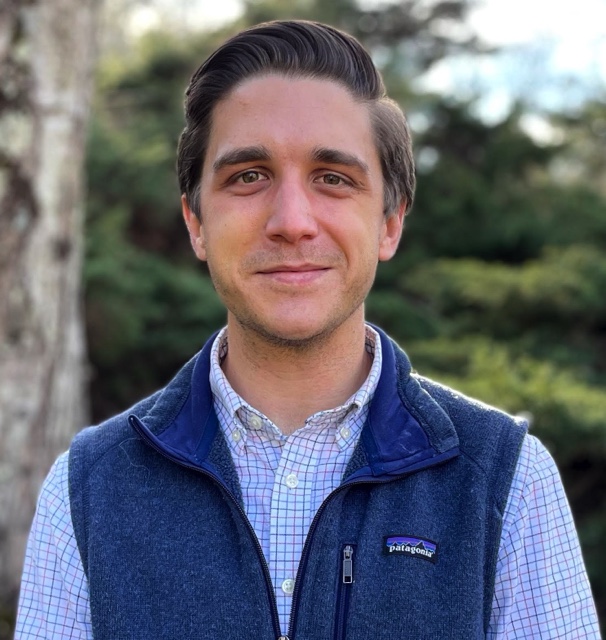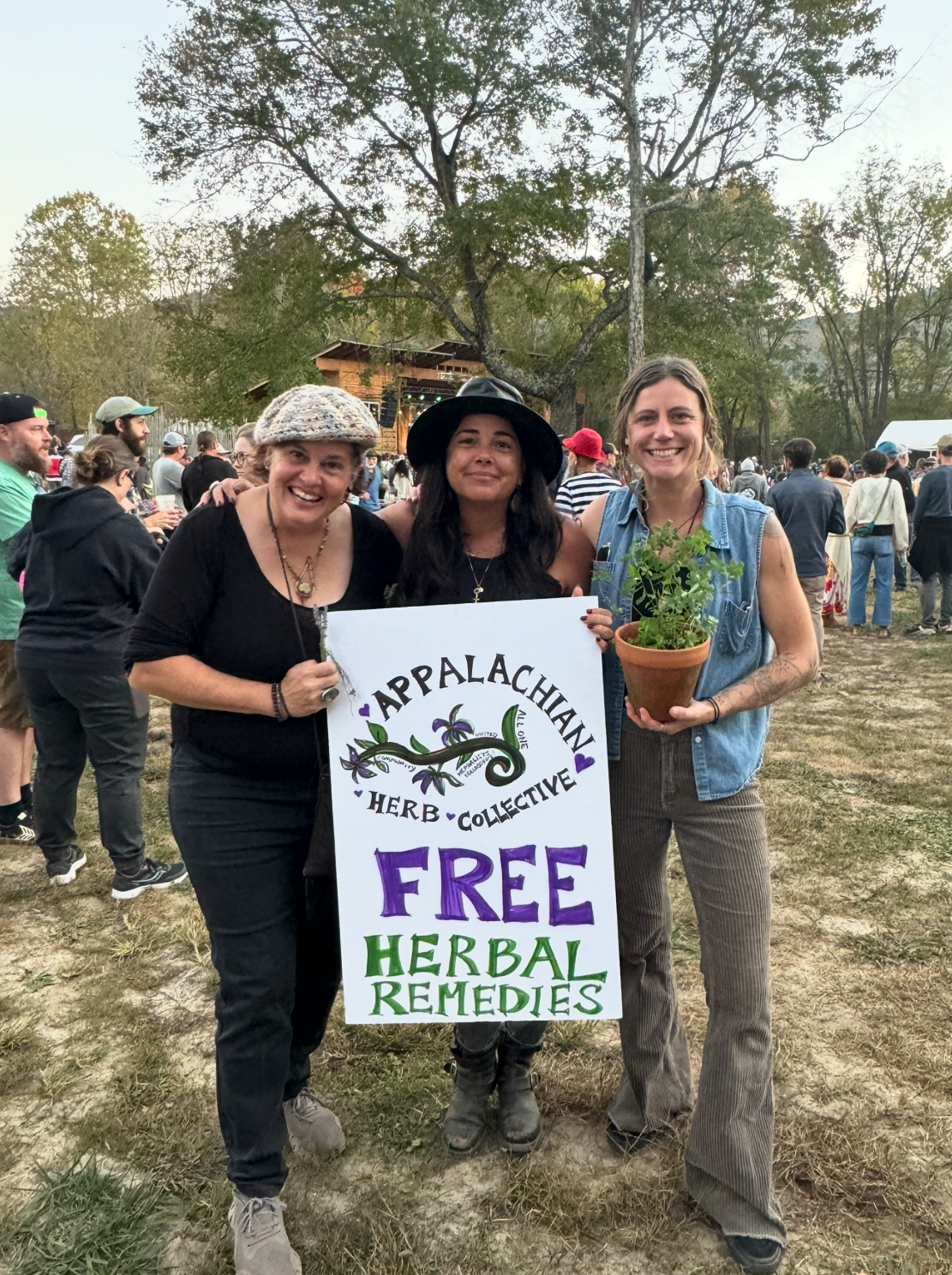Healing can come from work we do with a therapist, a spiritual leader or a higher power. But a truism in the mental health community is that we are also healed with others — witnessing and sharing our individual and collective pains.
On a Thursday night in April, I drove to Henderson County for the Trauma Recovery Art Process series Creating Calm After Chaos, hosted at the Parks and Recreation Center on South Grove Street. The free workshop was one of four co-facilitated by trauma recovery coach Amy Lloyd Huggins and multimedia artist Kate Stockman. When I arrived, a mother and two teenage girls were my fellow art students. The series can accommodate up to eight people per event.
Huggins begins each workshop with a grounding exercise and then discusses different aspects of trauma processing and healing. In our class that evening, we learned about post-traumatic growth. The phrase, coined by psychologist Richard Tedeschi, is sometimes used interchangeably with the word “resilience.” But Huggins emphasized that the two concepts are different.
Resilience is like a rubber band that stretches out and then stretches back into its original shape, she explained. Post-traumatic growth, however, is when the rubber band stretches and snaps. It slingshots you into a future that you were not anticipating or prepared for, she continued.
Trauma rocks you to your core and challenges your belief systems, Huggins continued. But post-traumatic growth, which is catalyzed by that trauma, brings new possibilities and relationships your way, reveals personal strength and may even bring a new appreciation for life.
‘Not what I signed up for’
Stockman led the collage portion of the evening’s gathering.
We clipped pictures from magazines — a lot of older copies of The Laurel of Asheville — and affixed them onto mat boards with Elmer’s washable school glue sticks. Stockman didn’t instruct us to depict post-traumatic growth or to create anything in particular. Instead, she set a tone for a safe environment where we could talk about our lives while making our collages.
We chatted about a lot of topics. Helene. Work. Racism. Bullying in school. Bullying by teachers. College. Applying for scholarships. But at times the room fell silent except for the sounds of scissors snipping and the scrape of a glue stick across paper.
In those quieter moments, I thought about post-traumatic growth in my own life. What caused me to seek a new belief system? What rocked me to my core? What propelled me into a future that I was not anticipating or prepared for?
In 2019, my best friend Lilit Marcus was diagnosed with Stage 2B breast cancer. She had just moved to Hong Kong for a new job, and the coronavirus arrived in the region right as she began chemotherapy. (You can read Lilit’s own essay about her cancer journey at avl.mx/erd.) It is not an exaggeration to say that this chaotic time — mind you, I lived in Brooklyn, where COVID arrived in early 2020 — broke me.
I knew that suffering is not fair. I knew that hardship is not apportioned out according to one’s goodness. But the cruelty and randomness of cancer can’t be easily explained or intellectualized in the way that I would have found comforting. Accepting that someone I love might die before her 40th birthday — someone who is kind, smart, witty, moral, adventurous and wise — really did rock me to my core. I had never felt so powerless before. In the moment, it did not feel like a catalyst for growth. It simply felt completely terrifying.
In the first portion of the workshop, Huggins spoke about how post-traumatic growth can arise from a “feeling of betrayal of whatever our higher power is” and that our traumatic experience is “not what I signed up for” in life. Well, that certainly resonated. I had considered myself an atheist-leaning agnostic since my teen years. But Lilit’s cancer diagnosis made me realize I do believe in God. Because I found myself angry at God. Furious at God, really. A new belief system — I’m a believer, after all! — suddenly appeared quite unpleasantly after a lifetime of apathetic dormancy.
New insights
My experience with post-traumatic growth started rocky, which Huggins had indicated is not unusual. I experienced the deepest depression of my life from fall 2019 through winter 2020: I cried frequently, slept double-digit hours each day, had an upset stomach and my memory held onto new information like a Slip ‘N Slide. A hard conversation with my mother, who asked me point-blank if I was considering suicide, is forever burned into my brain. All of this — the physical symptoms, the despair — were wrought by the multiple traumas I endured at once. Part of my post-traumatic growth experience was moving through, and past, those beliefs (which were aided by Wellbutrin, an antidepressant).
My other classmates at Creating Calm After Chaos didn’t share their own stories about post-traumatic growth. What matters, though, is that we were alone making our art but together for the experience. The collage workshop gave us three indulgent hours together to think only about ourselves, our pain, our growth and our healing.
As for Lilit, she is in remission from breast cancer as of a year or so ago. She still lives and works in Hong Kong. She has been channeling her experiences into stand-up comedy — her own processing of trauma through art.
Loving someone through a cancer diagnosis and treatment was the hardest experience I’ve ever lived through. But I grew from it and changed. I respect and trust the person I am today all the more for having come out on the other side. After my art therapy session last month, I have a better understanding of why.
The Creating Calm After Chaos series runs through May on various days, times and locations. For more information, visit avl.mx/erg.

